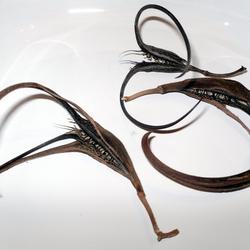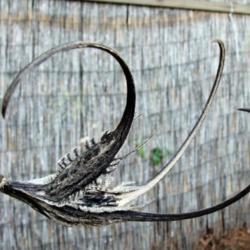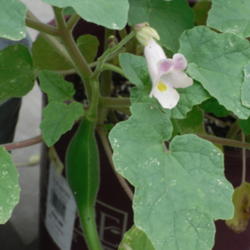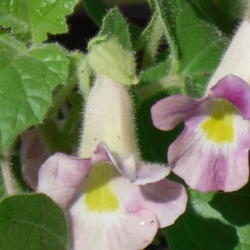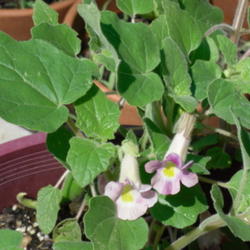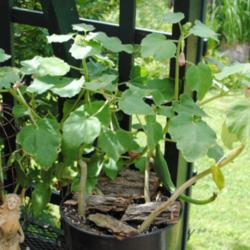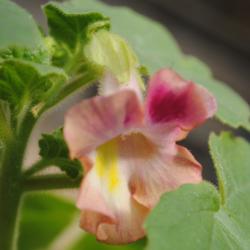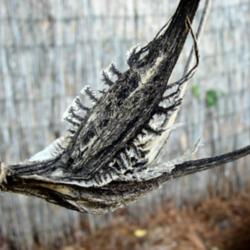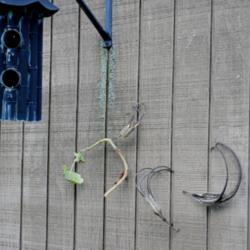Proboscidea parviflora var. hohokamiana is considered an annual in its native habitat. It is believed by ethnobotanists to have been domesticated by the women of the Tohono O’odham of southern Arizona. From each crop, they would choose seeds from pods that produced longer capsules for the next year's planting. Over time, they chose seeds that produced the longer capsules and seeds that germinated faster.
Seeds are rich in oil and protein and are edible, as are the fleshy fruits, which are sometimes pickled.
This species is easy to distinguish from P. altheaifolia by both the blooms and the seeds.
P. altheaifolia has 2-inch-long, bright yellow flowers, and is a perennial. The seeds are black.
The seeds can take several years to germinate.
P. parviflora var. hohokamiana has purplish/pink blooms and black seeds, and is an annual.
Both have foliage that hugs the ground and is heliotropic (follows the sun).
The plant became so important in basket making that it spread to over 25 native cultures. The seed pods are still used in craft making.
Native plant found in disturbed dry places below about 3200 feet in the
deserts of southwestern California to Arizona,
southern Nevada, to western Texas and northern
Mexico.
An interesting explanation of how the seed pods were used in basket making.
http://www.statemuseum.arizona...
